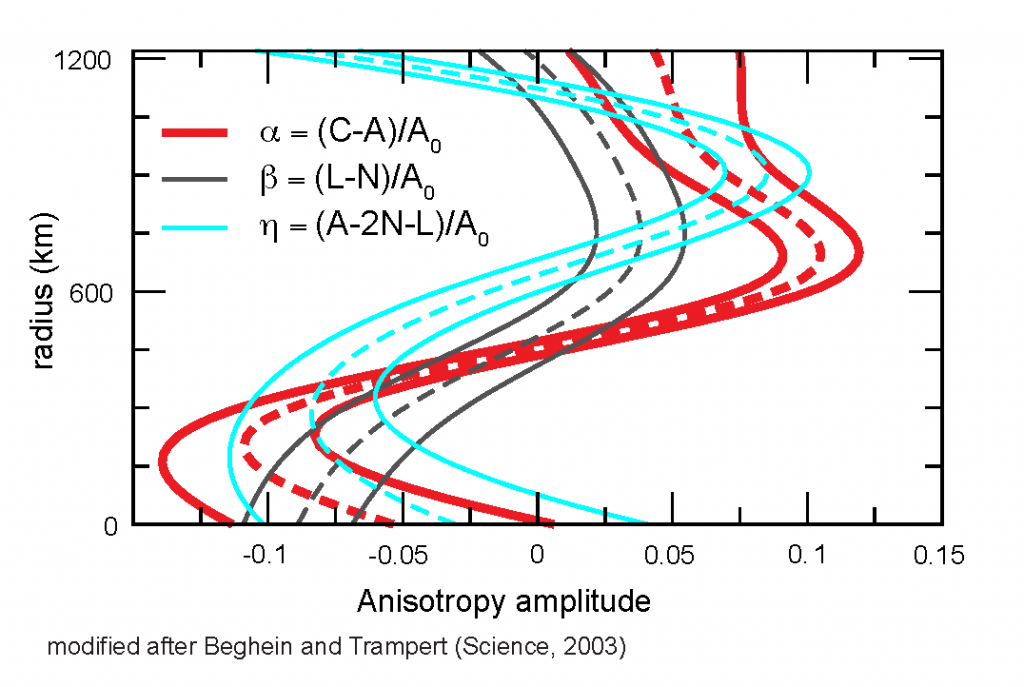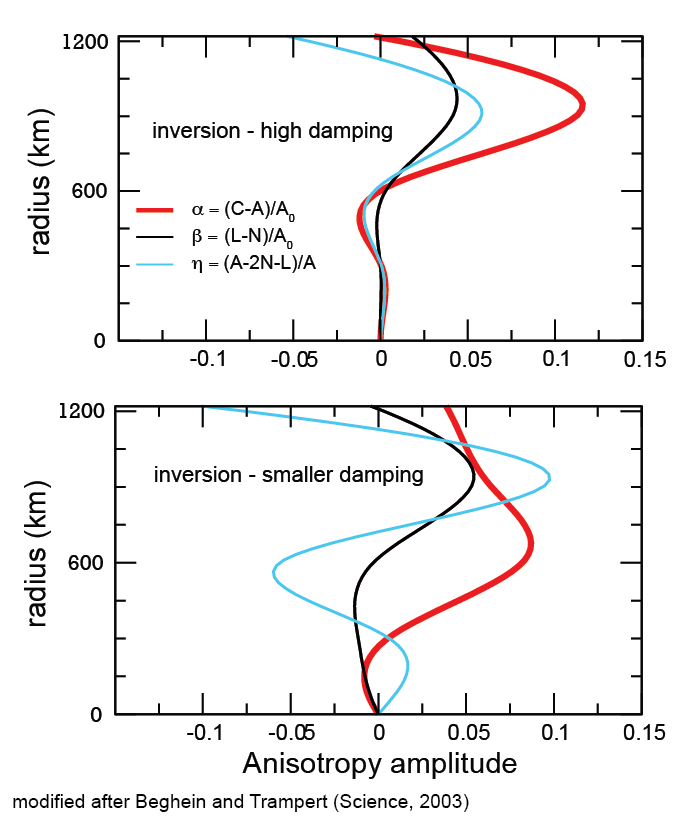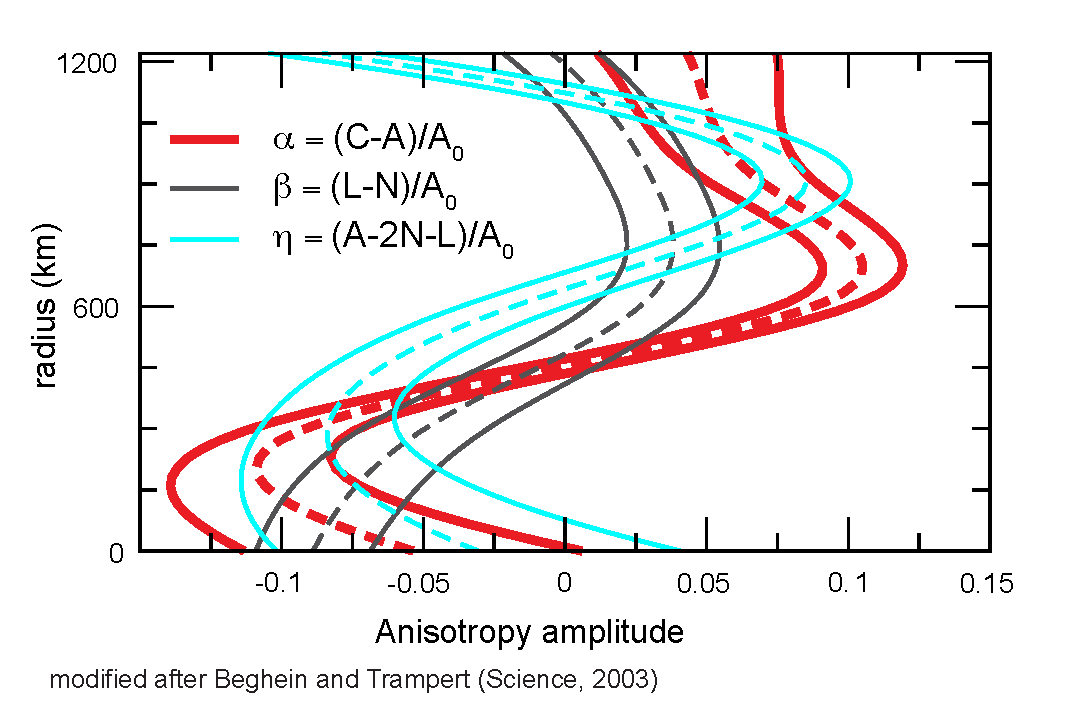Model Download:
ICaniso_beghein.tar.gz – WARNING: The published article contains a typo in the definition of S-wave anisotropy (Beta). The definition used for the calculation is the same as in Tromp (1993): beta=(L – N)/A0. This means that in the top of the inner core we have both VSV>VSH and VPV>VPH, and in the lower part of the inner core we have VSV<VSH and VPV<VPH. The figures below have the correct legend.
Citation:
![]() Beghein, C., and Trampert, J., Robust normal mode constraints on inner core anisotropy from model space search, Science, 299, 552-555, doi:10.1126/science.1078159, 2003
Beghein, C., and Trampert, J., Robust normal mode constraints on inner core anisotropy from model space search, Science, 299, 552-555, doi:10.1126/science.1078159, 2003

Inversion results for inner core anisotropy (below) based on normal modes were strongly dependent on damping and none displayed an amplitude high toward Earth’s center. By sampling the model space, including the null-space, and looking at the distribution of likely solutions, we found a new family of models that explain the normal modes (top). Our results show an increase in anisotropy with depth down to the middle if the inner core and a change in anisotropy below, which could be the signature of a phase change within the inner core.

This work was presented at the following meetings and conferences:
- Trampert, J., and Beghein, C., Inner core anisotropy as seen with normal modes and the Neighourhood Algorithm, Eos Trans. AGU, 85(47), Fall Meet. Suppl., Abstract, 2004.
- Beghein, C., and Trampert, J., Robust normal mode constraints on inner core anisotropy with the neighbourhood algorithm, EOS Transactions, Eos Trans. AGU, 83(47), Fall Meet. Suppl., Abstract S12D-01, 2002.
- Beghein, C., and Trampert, J., Robust normal mode constraints on inner core anisotropy from full model space search, Royal Astronomical Society Discussion Meeting, Earth´s deep interior, October 2002.
